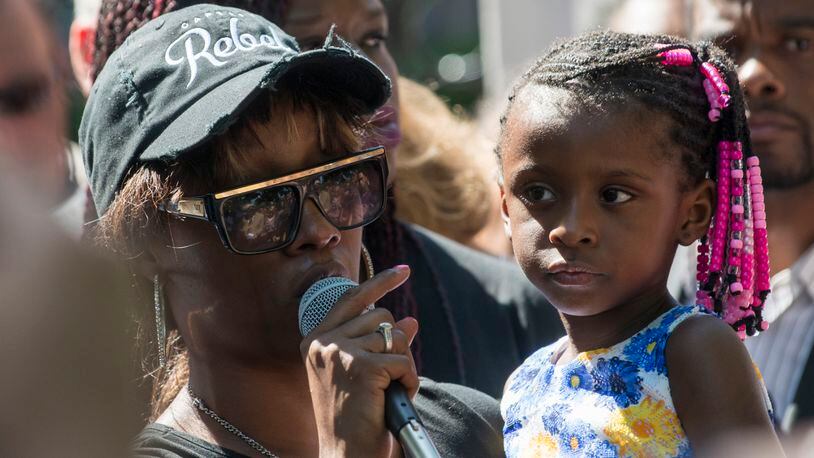But in at least two significant ways, social media — and in particular streaming video instantly available through social networks — took important steps forward, said researchers who follow the way we broadcast and view video online.
With the Dallas shootings, bystanders who recorded the onslaught of bullets and shared their footage online helped create a multi-perspective narrative that gave the world an immediate window into the chaos that news outlets couldn't provide on their own.
And earlier in the week, in police shootings of black men in Baton Rouge and Minnesota, video continued to build the case that deep racial divides in America still exist. In the case of a Facebook Live stream shot by Diamond Reynolds in Falcon Heights, Minnesota, a template might have been created for how to broadcast an incident of police violence.
Mary Angela Bock, an assistant professor at the University of Texas School of Journalism who studies visual narratives and police accountability, says she's been thinking a lot about the week's incidents and how they've played out online.
She said the increased ubiquity of live-streaming services such as Periscope and Facebook Live is supporting our ability to gather more evidence and better view hat's happening during events like the Dallas sniper attack, especially if it's unedited.
"I'm a big advocate of multiple perspectives," Bock said. "Raw video is very good evidence. It not only has the power of photography and audio recording, it has a timeline. As long as that timeline is not interrupted, you can see how events unfolded."
Body cameras and dashboard cameras on police cars, she said, are helping create accountability in police incidents, but it's not enough.
All social media users, she said, are part of the media now, and have access to more streams of information than ever before. The horror of the images we're seeing and the volume of perspectives is distressing. But, she said, our emotional response to the visceral material we're seeing is a product of the events themselves, not the medium of video.
"These events are horrifying. These events are emotionally devastating," Bock said. "But it's not the video that's making it emotionally devastating, it's the fact that people are dead."
Jeremy Littau, an assistant professor at Lehigh University in Pennsylvania, was co-author of the research project "Up, Periscope: Mobile Streaming Video Technologies, Privacy in Public, and the Right to Record."
He said that the Facebook Live video streamed by Diamond Reynolds after the fatal shooting of her boyfriend Philando Castile could prove to be a watershed moment for live streaming. "Somebody pulled out a phone and was broadcasting live and we haven't really seen that before in an incident of police violence," Littau said.
"Diamond Reynolds has shown the way of what to do next time. (The Minnesota video) has real potential to build awareness of a tool," he said.
Preventing citizens from recording police incidents has been ruled unconstitutional, but Littau said there are still many legal and ethical questions evolving around the use of live streaming, privacy and how it shapes the way we perceive events we only see online.
Video in particular, Littau said, is more likely to convince someone an incident is true than simply hearing or reading about it. But in cases where videos are incomplete or streamed after an incident, it can create a situation where viewers fill in the gaps themselves.
"It's problematic when it's from one angle, one perspective," he said. "The more videos being shot from multiple perspectives, the better."
But, he acknowledged that a flood of video from different perspectives can also create problems. Who pieces the narrative together and derives meaning ?
"From Dallas, I was seeing people posting random videos. There was no context to it or attempt to link these things together," he said. "How do we deal with an onslaught of information from around the world? We need to learn as citizens to navigate this information."
About the Author
